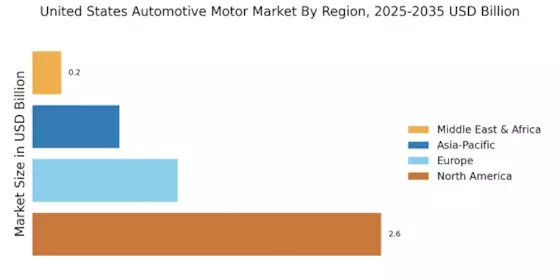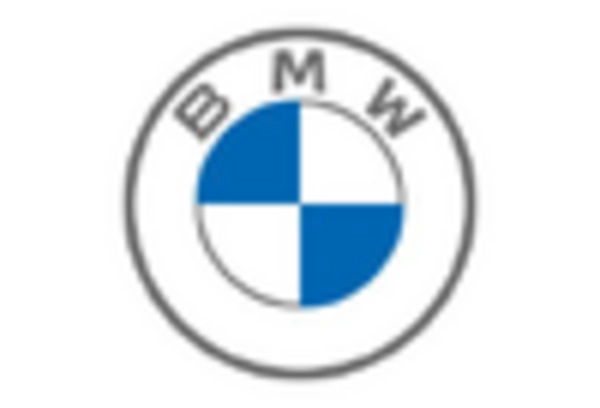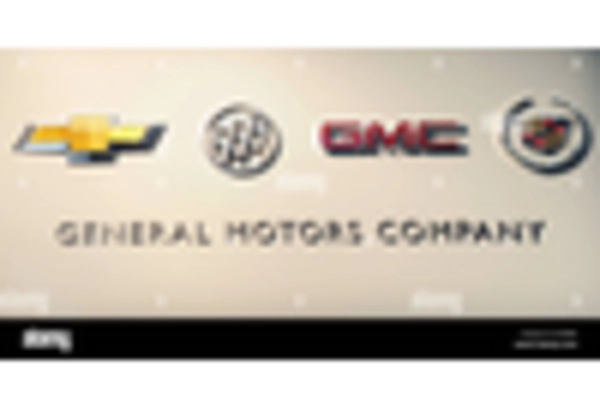Shift Towards Autonomous Vehicles
The shift towards autonomous vehicles is poised to have a profound impact on the automotive motor market. As manufacturers invest in self-driving technology, the demand for advanced motor systems that can support autonomous functionalities is increasing. These systems require highly efficient and reliable motors to ensure safety and performance. In 2025, it is estimated that the market for autonomous vehicles will reach $60 billion, indicating a substantial opportunity for the automotive motor market. Furthermore, the integration of artificial intelligence and machine learning in motor control systems is enhancing the capabilities of vehicles, making them smarter and more efficient. This trend towards autonomy is likely to drive innovation in motor technology, leading to the development of specialized motors designed for autonomous applications.
Government Incentives and Regulations
Government incentives and regulations are significantly influencing the automotive motor market. In the US, federal and state governments are implementing various policies to promote the adoption of electric vehicles and reduce greenhouse gas emissions. For example, tax credits of up to $7,500 for electric vehicle purchases are encouraging consumers to opt for EVs. Additionally, regulations mandating stricter fuel efficiency standards are pushing manufacturers to develop more efficient motors. The Corporate Average Fuel Economy (CAFE) standards require automakers to achieve an average fuel economy of 54.5 mpg by 2025, which is driving innovation in motor technology. These government initiatives are likely to create a favorable environment for the automotive motor market, fostering growth and encouraging the transition to cleaner transportation solutions.
Rising Fuel Prices and Economic Factors
Rising fuel prices and various economic factors are contributing to the dynamics of the automotive motor market. As fuel prices continue to fluctuate, consumers are increasingly seeking more fuel-efficient vehicles to mitigate their transportation costs. This trend is particularly evident in the growing interest in hybrid and electric vehicles, which offer lower operating costs compared to traditional gasoline-powered cars. In 2025, the average price of gasoline in the US is projected to reach $4.00 per gallon, prompting consumers to consider alternatives. Additionally, economic factors such as disposable income and consumer confidence play a role in vehicle purchasing decisions. As the economy stabilizes, the automotive motor market is likely to benefit from increased consumer spending on more efficient and innovative vehicle options.
Technological Advancements in Motor Design
Technological advancements are playing a crucial role in the evolution of the automotive motor market. Innovations in motor design, such as the development of high-efficiency electric motors and lightweight materials, are enhancing performance and reducing energy consumption. For instance, the introduction of permanent magnet synchronous motors (PMSMs) has improved the efficiency of electric vehicles, with some models achieving efficiencies of over 90%. Furthermore, advancements in manufacturing processes, such as 3D printing, are enabling the production of more complex motor designs at lower costs. These technological improvements not only enhance the performance of vehicles but also contribute to the overall growth of the automotive motor market. As manufacturers continue to invest in research and development, the market is likely to witness further innovations that will drive efficiency and performance.
Growing Demand for Sustainable Transportation
The automotive motor market is experiencing a notable shift towards sustainable transportation solutions. This trend is driven by increasing consumer awareness regarding environmental issues and the need for reduced carbon emissions. In the US, the demand for electric vehicles (EVs) has surged, with sales reaching approximately 6.6 million units in 2025, representing a growth of 25% from the previous year. This shift is prompting manufacturers to invest heavily in electric motor technologies, which are essential for the production of EVs. Consequently, The automotive motor market is likely to see a significant increase in the adoption of electric motors due to their efficiency and environmental benefits compared to traditional internal combustion engines. This growing demand for sustainable transportation is expected to reshape the automotive motor market landscape in the coming years.


















Leave a Comment